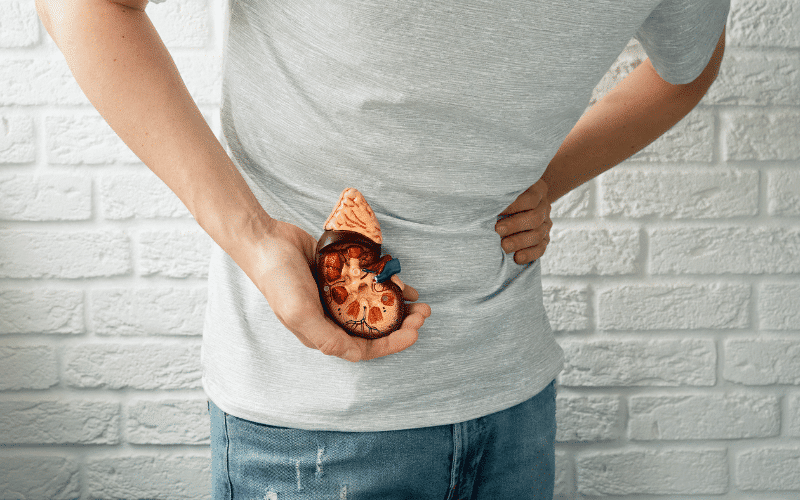FAQ: Kidney Stones Symptoms and Signs

1. Can kidney stone symptoms come and go?
Yes, kidney stone symptoms can come and go, particularly the pain associated with the stone’s movement through the urinary tract. The pain may come in waves, varying from mild to severe, as the stone shifts positions or temporarily gets stuck in the urinary tract.
2. How can I tell if my back pain is due to kidney stones?
While back pain can have many causes, kidney stone-related back pain is typically severe, originates in the side and back (flank area), and may radiate to the lower abdomen and groin. If you experience this type of pain accompanied by other kidney stone symptoms, consult a healthcare professional for proper evaluation and treatment.
3. Are there any at-home remedies to alleviate kidney stone symptoms?
While there is no substitute for professional medical care, there are some steps you can take at home to alleviate kidney stone symptoms. Drinking plenty of water can help flush the stone from your system, while over-the-counter pain relievers, such as ibuprofen, can provide temporary relief from pain and inflammation. However, it’s essential to consult a healthcare professional for proper evaluation and treatment.
4. How long do kidney stone symptoms typically last?
The duration of kidney stone symptoms can vary depending on the size and location of the stone, as well as individual factors. In some cases, symptoms may resolve within a few days, while in others, they may persist for weeks or even months. If you’re experiencing kidney stone symptoms, it’s crucial to seek medical attention for proper evaluation and treatment.
5. Are there any preventive measures I can take to reduce my risk of developing kidney stones?
Yes, there are several preventive measures you can take to reduce your risk of developing kidney stones:
• Stay well-hydrated by drinking plenty of water throughout the day.
• Limit your intake of high-oxalate foods, such as spinach, beet greens, and nuts.
• Consume an appropriate amount of calcium, as low calcium intake can contribute to kidney stone formation.
• Reduce your salt intake, as excessive sodium can increase calcium excretion in the urine, leading to stone formation.
• Maintain a healthy body weight and engage in regular physical activity.
Remember that prevention is always better than cure, so adopting a healthy lifestyle can significantly reduce your risk of kidney stone development.
Conclusion: Recognizing and Addressing Kidney Stone Symptoms
In summary, kidney stones can present with a wide range of symptoms, including severe pain in the side and back, blood in the urine, frequent and painful urination, nausea and vomiting, fever and chills, and many others. Recognizing these signs of nephrolithiasis and renal calculi symptoms is crucial for early detection and intervention, which can help prevent complications and alleviate discomfort.
If you experience any of the 20 symptoms of kidney stones discussed in this article, it’s essential to consult a healthcare professional for proper evaluation and treatment. Early intervention can make a significant difference in managing the condition and preventing further issues.
Moreover, adopting a healthy lifestyle and taking preventive measures can greatly reduce your risk of developing kidney stones in the first place. Staying well-hydrated, consuming an appropriate amount of calcium, limiting high-oxalate foods, reducing salt intake, and maintaining a healthy body weight are all important steps in preventing kidney stone formation.
By staying informed about the various symptoms and signs of kidney stones, you’ll be better equipped to address this condition effectively and maintain your overall well-being.